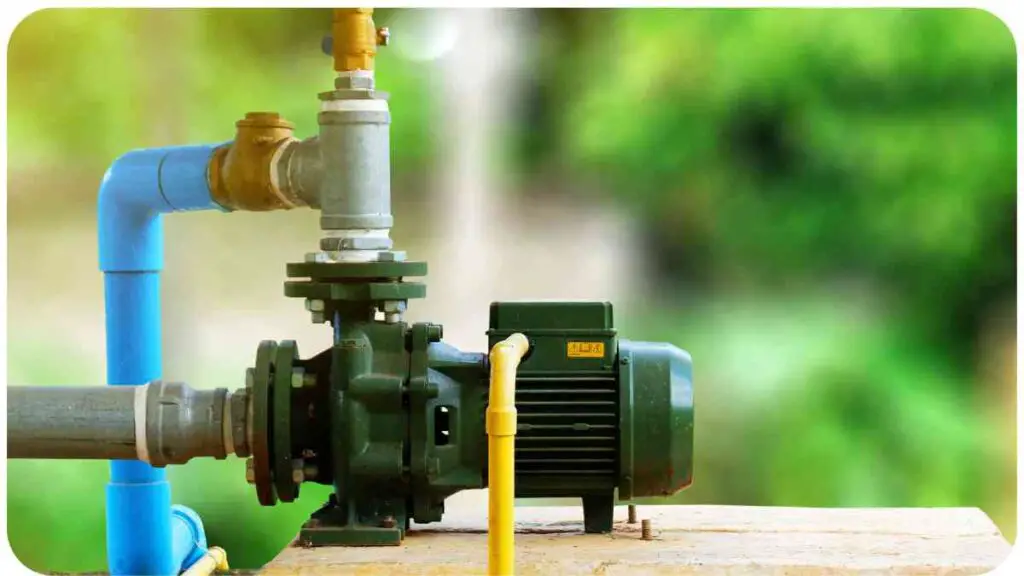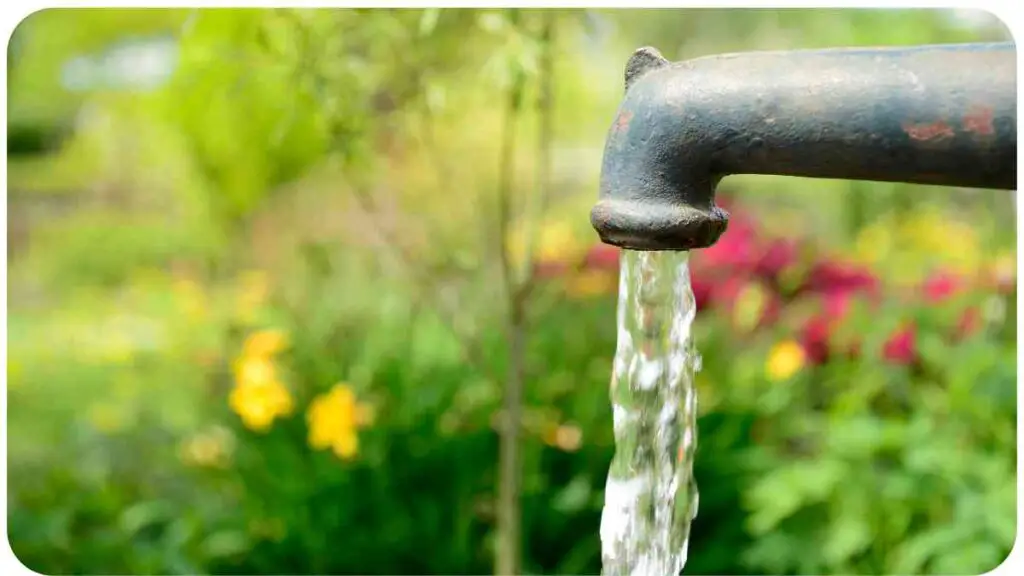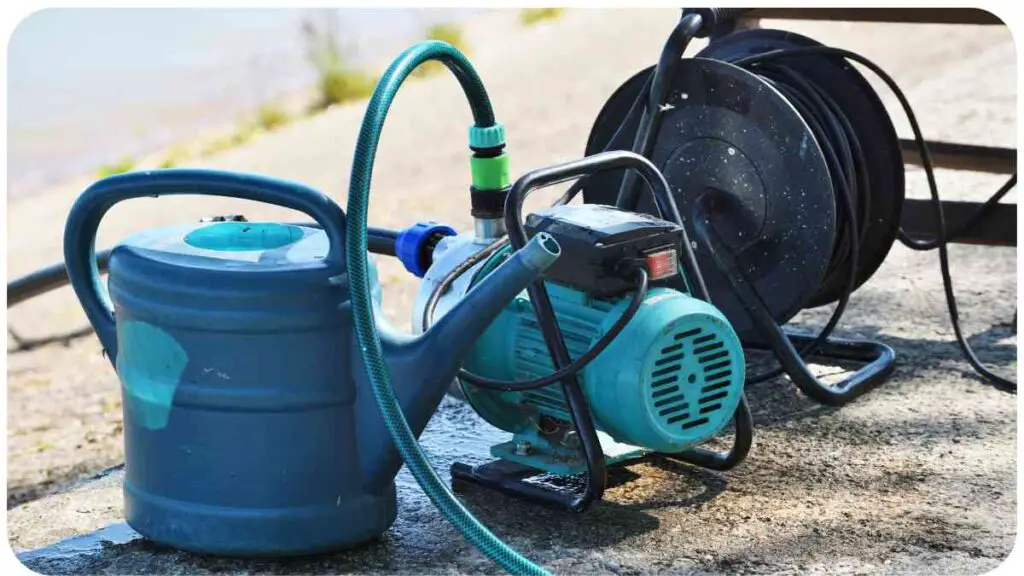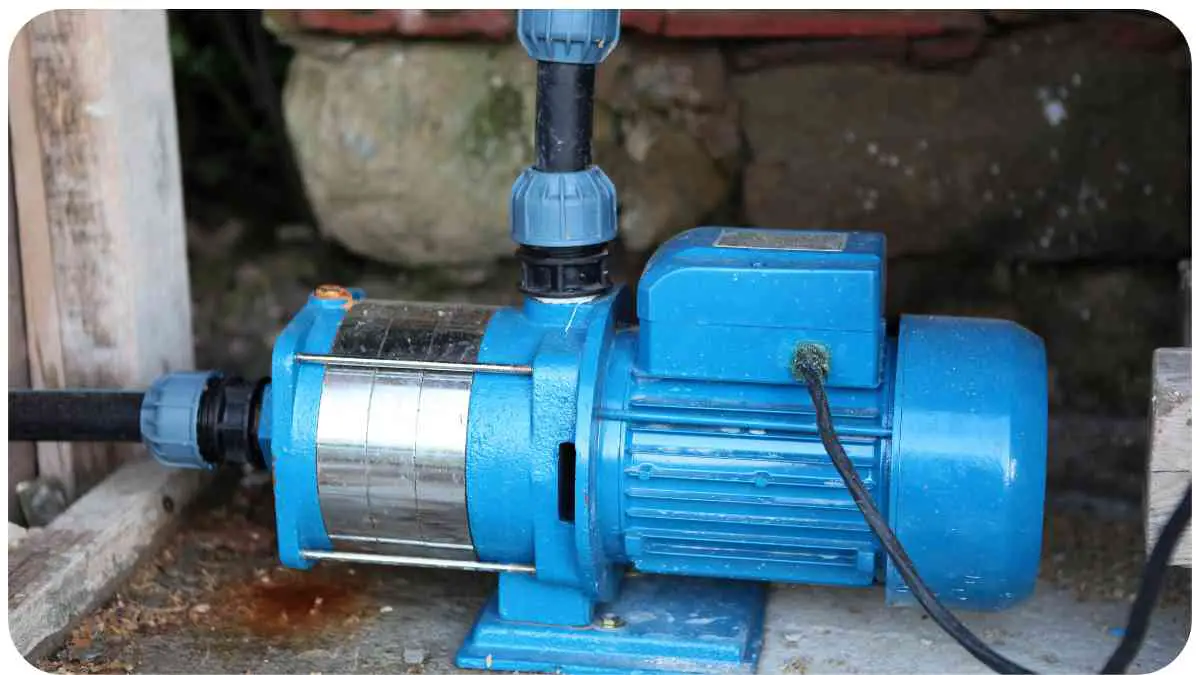Garden ponds are a blend of natural beauty and human ingenuity. But behind this serene exterior lies the heart of the pond – the pump. A garden pond pump isn’t just a machine; it’s the lifeblood of your pond, ensuring water circulation, aeration, and filtration.
In this guide, we’ll embark on a journey to demystify the enigma of flow rates and empower you to choose the right pump size for your pond’s unique features.
| Key Takeaways |
|---|
| Choose the right pond pump size by considering factors like pond size, desired effects, and ecosystem dynamics. |
| Proper flow rates ensure oxygen distribution, prevent stagnation, and promote a balanced pond ecosystem. |
| Avoid common mistakes like misjudging pond size or neglecting filtration when determining flow rates. |
| Regular maintenance, including cleaning and adjustments, is crucial for optimal pump performance. |
| Energy-efficient pumps are a sustainable choice that benefits both your budget and the environment. |
| Experiment with pump adjustments to enhance your pond’s aesthetics and aeration. |
| Stay updated with innovations in pond pump technology for more efficient and user-friendly options. |
Understanding Garden Pond Pump Flow Rates

Imagine the flow rate as the pulse of your pond. It’s the rate at which water moves through the pump and into various pond features. This rate affects not only the aesthetics, with cascading waterfalls and dancing fountains, but also the health of aquatic life and the efficiency of filtration systems.
Exploring the intricate workings of aquaponics systems, this article delves into the technology behind aquaponic gardens, shedding light on the innovative mechanisms that resonate with the principles of understanding flow rates in pond pumps.
Factors Influencing Flow Rate Requirements
Determining the ideal flow rate requires considering multiple factors. The size of your pond, the desired visual and auditory effects, the types of aquatic plants and fish, and the pond’s overall ecosystem dynamics all play crucial roles.
Calculating Flow Rate for Different Pond Features
Let’s dive into practical scenarios to understand flow rate calculations for distinct pond features.
Waterfall Flow Rate
| Pond Feature | Desired Flow Rate (L/hr) | Ideal Pump Size |
| Cascading Waterfall | 2000 – 4000 | AquaFlow 3500 |
| Dramatic Cascade | 5000 – 8000 | PondMaster Pro 7500 |
| Gentle Stream | 1000 – 2000 | WaterCascade Elite 1500 |
Table 1: Waterfall Flow Rate Requirements and Recommended Pump Sizes
Fountain Flow Rate
| Fountain Type | Flow Rate Range (L/hr) | Optimal Pump Size |
| Tiered Fountain | 800 – 1200 | AquaFlow 1000 |
| Spouting Fountain | 1200 – 1800 | PondMaster Pro 1500 |
| Statuary Fountain | 400 – 600 | WaterCascade Elite 500 |
Table 2: Fountain Flow Rate Ranges and Corresponding Pump Sizes
Filtration System Flow Rate
| Pond Size | Filtration Rate (L/hr) | Suitable Pump Size |
| Small (up to 1000 L) | 500 – 800 | AquaFlow 800 |
| Medium (1000 – 5000 L) | 1000 – 2000 | PondMaster Pro 2000 |
| Large (5000+ L) | 2000 – 4000 | WaterCascade Elite 3500 |
Table 3: Filtration System Flow Rate and Recommended Pump Sizes
Selecting the Right Pond Pump Size
Armed with insights into various flow rate scenarios, it’s time to match your pond’s personality with the perfect pump. Remember, a pump that’s too weak won’t create the desired visual and aural effects, while an overly robust pump might disrupt the harmony of your ecosystem.
In the realm of aquaponics, water management reigns supreme. Discover insights on the frequency of water changes in aquaponic setups in the resource on changing water in aquaponics, mirroring the vital fluid dynamics pertinent to pond pump flow rates.
Importance of Balanced Flow for Pond Ecosystem
Picture your pond as a delicately balanced ecosystem – every ripple, every splash, contributes to its equilibrium. Proper flow rates ensure oxygen distribution, prevent stagnation, and promote nutrient circulation. Fish thrive, plants flourish, and algae stay in check when the flow is just right.
Avoiding Common Mistakes in Determining Flow Rates
Misjudging your pond’s size, overlooking the intricacies of filtration, and underestimating the power of customized flow can lead to disappointment. Avoid these pitfalls by taking a holistic approach to your pond’s design and the pump’s capabilities.
Practical Tips for Maintaining Optimal Pump Performance

As a seasoned pond enthusiast, I’ve encountered my fair share of pump predicaments. Here are some pearls of wisdom:
- Regular Clean-Up: Pond pumps are diligent workers, but they need a spa day too. Clean the intake, impeller, and filter regularly to maintain optimal flow.
- Weather Watch: Adjust flow rates based on seasons. Higher flow might be required during summer to prevent heat-related issues.
- Mind the Pipes: Ensure pipes and hoses aren’t kinked or clogged, as they can restrict flow and stress your pump.
Navigating the design and construction of nutrient film technique (NFT) aquaponics systems, this guide to building an NFT aquaponics system parallels the intricacies of channeling and directing flows, akin to understanding the needs of garden pond pumps.
Comparing Top Pond Pump Brands
Let’s dive into the realm of top-notch pond pump brands, each with its unique prowess.
AquaFlow
AquaFlow’s precision engineering ensures whisper-quiet operation and energy efficiency. Their pumps are like the virtuosos of the pond world, seamlessly blending aesthetics and functionality.
PondMaster Pro
PondMaster Pro pumps are workhorses, ideal for larger water bodies with demanding flow rate needs. These pumps boast durability and versatility, a testament to the brand’s commitment to excellence.
WaterCascade Elite
WaterCascade Elite stands for innovation. Their pumps bring a touch of elegance to the pond while maintaining the required flow rate. An epitome of sophistication and performance.
Table 4: Comparison of Top Pond Pump Brands
| Brand | Notable Features | Popular Models |
| AquaFlow | Quiet operation, energy-efficient | AquaJet 3000 |
| PondMaster Pro | Durable, versatile | ProMax 5000 |
| WaterCascade Elite | Elegant design, high performance | CascadeX 2000 |
Extending Pump Lifespan through Maintenance
Just like tending a garden, maintaining your pump ensures a prolonged and fruitful life. Regular check-ups, cleaning, and timely repairs can keep your pump humming for years, saving you time and money in the long run.
In the garden’s realm, maintenance stands as a cornerstone. Discover guidance on the optimal timeline for replacing potting soil—a parallel to maintaining a consistent flow and performance in garden pond pumps
DIY Troubleshooting for Pump Performance Issues
No garden pond journey is complete without a few bumps. If your pump falters, don’t fret. Check for clogs, ensure proper electrical connections, and inspect for leaks. Sometimes, the simplest solutions yield the most significant results.
Enhancing Aesthetics and Aeration with Pump Adjustments

Your pump isn’t just a workhorse; it’s an artist. Adjust flow rates to create captivating water displays or tranquil ripples. Experiment with flow patterns to infuse life into your pond’s aesthetics and provide essential aeration for aquatic inhabitants.
Sustainable Practices: Energy Efficiency and Conservation
As a nature lover, I strive to minimize my ecological footprint. Opt for energy-efficient pumps that offer powerful flow while consuming less power. It’s a win-win – both for your wallet and the environment.
Innovations in Garden Pond Pump Technology
The world of pond pumps is evolving. From smartphone-controlled flow adjustments to pumps that adapt to weather conditions, innovation is transforming the way we interact with our ponds. Embrace the future of pond-keeping.
Conclusion
Congratulations, you’ve unlocked the secrets of garden pond pump flow rates! Armed with expertise, you can now choose a pump that harmonizes with your pond’s personality and elevates its aesthetics and health.
Remember, a well-chosen pump isn’t just a machine; it’s a partner in crafting your aquatic haven. As you embark on this journey, may your pond flourish, and the tranquil melody of flowing water be a testament to your skill and dedication. Happy ponding!
Assembling a backyard terrace involves meticulous planning. Delve into pro tips for building a backyard terrace that echo the need for precision and calculation—similar to the considerations when establishing optimal flow rates for garden pond pumps
Further Reading
For more in-depth information on garden pond pumps and flow rates, consider exploring the following resources:
GardenSite – Garden Pond Pumps FAQ Short Description: This comprehensive FAQ guide covers a wide range of questions related to garden pond pumps, addressing common concerns and providing practical insights.
PondInformer – Pond Pump Size Guide Short Description: Dive into this detailed guide that focuses on understanding pond pump sizes, offering step-by-step instructions to help you choose the right pump for your pond.
The Pond People – Choosing the Flow Rate for Your Pond Pump Short Description: This resource delves into the intricacies of flow rate selection for pond pumps, providing valuable advice and considerations to ensure optimal pump performance.
FAQs
How do I determine the ideal flow rate for my garden pond pump?
The ideal flow rate depends on factors such as your pond’s size, the types of aquatic life you have, and the desired aesthetic features. To calculate it, consider the pond’s volume, the turnover rate, and the needs of your pond ecosystem.
Can I use a pump with a higher flow rate than recommended for my pond?
Using a pump with a higher flow rate might seem beneficial, but it can disrupt the delicate balance of your pond’s ecosystem. Excessive water movement can stress aquatic life and lead to increased energy consumption. It’s best to stick within the recommended flow rate range.
How can I adjust the flow rate of my pond pump?
Most modern pond pumps come with adjustable flow rate settings. You can typically find controls on the pump itself or via a remote control for more advanced models. Adjusting the flow rate allows you to fine-tune the water features and aeration in your pond.
Are there any energy-efficient pond pump options available?
Yes, many manufacturers offer energy-efficient pond pump models. These pumps are designed to provide optimal flow rates while minimizing power consumption. Choosing an energy-efficient pump not only benefits your wallet but also contributes to environmental sustainability.
What role does the pump play in maintaining water quality?
The pump plays a vital role in maintaining water quality by ensuring proper circulation and filtration. Adequate flow rates prevent stagnant areas where debris and harmful substances can accumulate. By keeping the water moving and passing through filtration systems, the pump helps to maintain clear and healthy water conditions.

For 15 years, Hellen James has worked in the gardening industry as an expert and landscape designer. During her career, she has worked for a variety of businesses that specialize in landscaping and gardening from small firms to large corporations.

